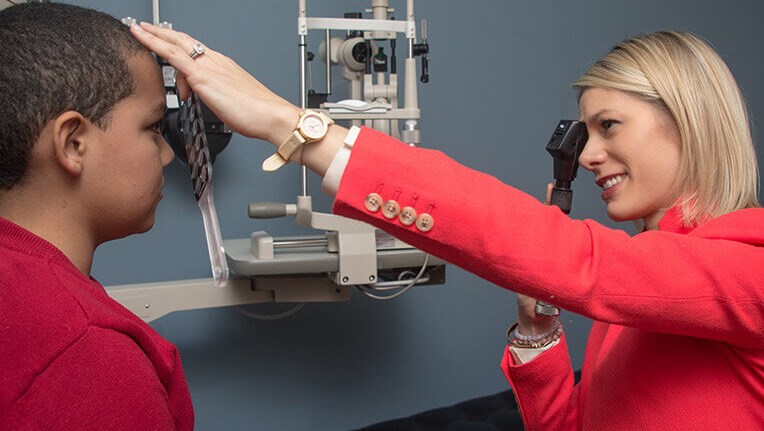Full Hyperopic Correction vs Partial Hyperopic Correction
&srotate=0)
Full Hyperopic Correction vs Partial Hyperopic Correction for Acquired Childhood Esotropia
Megan Allen
Abstract
Purpose: A prospective, randomized, masked pilot study to compare the effectiveness of partial hyperopic correction with full hyperopic correction in reducing the magnitude of new onset esotropia in children.
Methods: 45 children age 1-7 years with new onset esotropia of at least 10¿ at near and spherical equivalent hyperopia = 2.5 diopters were randomly assigned to full plus correction or partial plus correction (1 diopter less than full plus). Primary outcome was a group comparison of success rates based on strict or monofixation criterion in randomized spectacles at 2 months. Strict criterion defined success as no manifest esotropia at distance and near while monofixation criterion defined success as any manifest esotropia of = 8¿ measured at distance and near.
Results: 39 participants (21 in full plus and 18 in partial plus) completed the primary outcome examination. Mean age (3.3 years in full plus and 3.1 years in partial plus) and mean refractive error in the most hyperopic eye (4.8D in full plus and 4.5D in partial plus) were not statistically different between the two groups. When strict criterion was used, the success rate was 52% (11 of 21)in the full plus group and 44% (8 of 18) in the partial plus group (p=0.751). When monofixation success criterion was used, success rate was 57% (12 of 21) in the full plus group and 61% (11 of 18) in the partial plus group (p=1.00).
Conclusions: Children with new onset esotropia treated with partial plus had fairly similar success rates compared with full plus. Therefore, there was insufficient evidence to support one treatment method over the other for improved alignment in children with new onset esotropia. Additional studies with larger sample size and longer follow-up are warranted to confirm the effectiveness of partial plus for new onset esotropia in children.